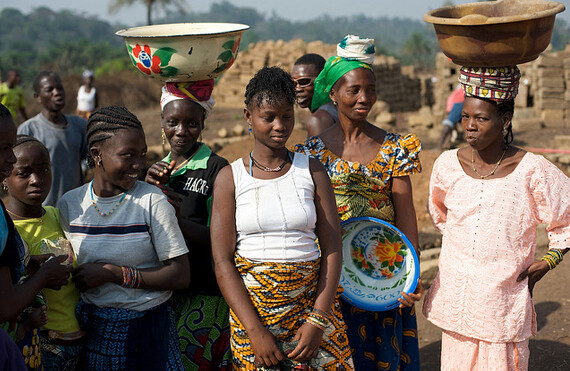All too often we shy away from evaluating and holding humanitarian efforts accountable to their project goal. We want to assume that do-gooders are doing good, though even with the best of intentions reconciliation can be elusive.
In the absence of clear metrics for success, comparable across post-conflict zones, the profession of peace-building can be cynically dismissed by policy hawks. And with professional programs to train peace-builders developing worldwide, greater rigor is needed in this area. Furthermore, as resources for international peace-keeping operations become more limited, the stakes increase for monitoring and evaluating the effectiveness of humanitarianism.
The use of indices, such as the Human Development Index or the Transparency International Corruption Perceptions Index, is widespread among donor agencies. Often such indices are used in post-conflict situations as an indirect measure of reconciliation. Yet they are a degree removed from the micro-level reconciliation processes that often take place at the community level. The lag time between those processes and their translation into broader development or corruption indicators can be several years. It is also possible to see improvement in development indicators without actual conflict resolution at the community level—latent rivalries may be temporarily suppressed only to reemerge under socioeconomic stress. An indicator with higher resolution is thus needed to assess the progress of reconciliation.
The need for such an indicator became particularly apparent to us while working with Fambul Tok, a nonprofit organization that facilitates unofficial community-based reconciliation in Sierra Leone. The first step in their process consists of a community deciding whether it wants to reconcile—the chiefs hold participatory meetings along with Fambul Tok facilitators to determine the will of the community. If the community decides to go forward, then committees are formed to oversee and organize the process. Over the next several months the community prepares for a culminating ceremony around a bonfire, where the victims speak out about what the perpetrators, who are present, did to them during the war. The perpetrators must publicly acknowledge what they did and ask the victims for forgiveness.
Following the bonfire ceremony, other cleansing actions are carried out according to local traditions. The committees also organize reconciliation activities, such as community gardening and soccer tournaments, to keep bringing the community together. Often perpetrators will take over the gardening responsibilities of their victims, and both will play together on the same soccer team. The cost of the ceremonies and activities is paid for in part by Fambul Tok, but the community must also chip in to ensure commitment and ownership of the reconciliation process. These costs are no small detail in a land where starvation and extreme poverty are rampant.
The Fambul Tok process is quite different from that of Sierra Leone's Truth and Reconciliation Commission (TRC). The TRC was held in Freetown, which was not the most impacted region during the civil war. Moreover, poor people from the rural parts of Sierra Leone had little means of traveling to Freetown to attend the Commission. The TRC gave victims a chance to testify about what happened to them, and while this is of course extremely useful, it is not equivalent to engaging the community in the design process of its own reconciliation. The end result of the TRC was a report of recommendations and findings (distributed on the Internet). It is a critically important document, albeit one that can't encapsulate the side-by-side soccer tournaments that victims and perpetrators are now playing in the remote rural areas where the fighting started.
Communities that have gone through the Fambul Tok reconciliation process are not only healing the wounds of the brutal civil war but also building capacity for sustainable development. The civil war destroyed community bonds and traditions along with lives and property, and now the participation in town meetings and reconciliation committees has empowered them. The ceremonies offer release, and this combination of release and empowerment generates a community that is ready to participate in its own development. With so many failures in development due to the divide between donors and recipients, professionals have come to recognize the critical importance of community-based, participatory development projects.
What is needed is a composite indicator to substantiate the impact of this reconciliation approach through surveys and analysis of the various criteria of lasting reconciliation. The indicator could be used to determine progress in the reconciliation process, which in turn could determine the disbursement of precious development resources, increasing the success of sustainable development overall.
There are several variables to consider when ascertaining the efficacy of traditional techniques such as Fambul Tok: a return to functional livelihoods; mental health indicators suggesting a recovery from post-traumatic stress; anger management strategies; and gender dynamics, particularly in the context of parenting and spousal relations.
An indicator would not only help the process of reconciliation be more transparent, accountable, and effective, but also highlight the importance of reconciliation in attaining the larger goals of development.




